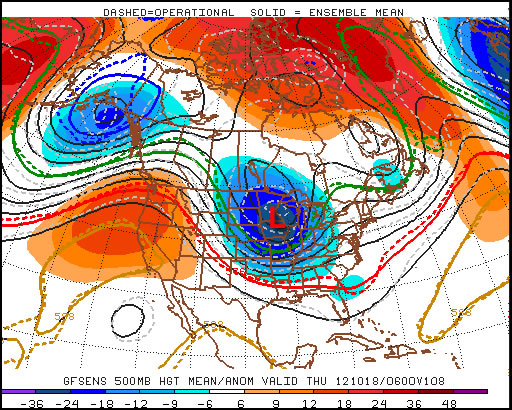Yesterday’s beautiful mid-October weather will be replaced in a hurry today and tomorrow, as a intense 985mb low pressure system brings unsettled weather into the Red River Valley with strong winds moving across the area as the low pushes eastwards.
Cloudy skies will be dominant over the Red River Valley over the next couple days. While temperatures are fairly mild this morning, and of note is how high our dewpoint has climbed, we won’t gain too much temperature-wise through the day today. Showers will push into portions of the Red River Vally & SE Manitoba this morning, however it’s likely that precipitation will be sporadic for any one location through the day today with fairly minimal accumulations. Conditions don’t look too favourable for drizzle today; you generally want saturated low-levels of the atmosphere with a sharp contrast into dry air immediately above the cloud deck for drizzle generation. Today, we’ll actually have dryer low-levels with a fairly moist atmosphere above, so it’s more likely that any light precipitation would be somewhat-evaporated rain, not drizzle. Temperatures will climb to 12 or 13°C today.
A band of steady rain will begin to push into the Red River Valley this evening as an area of strong frontogenesis1 on the northwest side of the 850mb low orients itself over the region. The band of rain looks to be fairly narrow, and positioning of it will be very sensitive to the positioning of the 850mb low. All areas in the Red River Valley will see some periods of rain tonight, however any locations that end up under this sharp band of rain will likely see 5-10mm of rain. Amounts remain low, despite the strong forcing, as this system, while energetic, is relatively low in moisture. Precipitable water values look to be only in the 20-25mm range, instead of the closer to 40-50mm range we look for for higher-accumulation rainfall events.
Winds will pick up overnight into Thursday as the Red River Valley moves into a strong pressure gradient on Thursday. Winds will climb to 40-50km/h with gusts up to 60km/h. Showers will be widespread through the Valley as general “wraparound” precipitation moves in on the backside of this system. Total amounts for tomorrow will generally be 4-8mm across the Red River Valley. The rain and wind will taper off tomorrow night as the system moves off towards the Great Lakes. Temperatures will drop down to 6 or 7°C.
Friday will be a slow recovery day, as the clouds will begin to break up a bit through the day. With skies remaining fairly cloudy with only a few breaks for sunshine, temperatures will end up fairly steady through the day; likely only around 8°C. Looking ahead to the weekend, it looks to be a fairly seasonal weekend with a mix of sun and clouds and highs near the seasonal 10°C.
- From the AMS Glossary: In general, an increase in the horizontal gradient of an airmass property, principally density, and the development of the accompanying features of the wind field that typify a front. ↩






